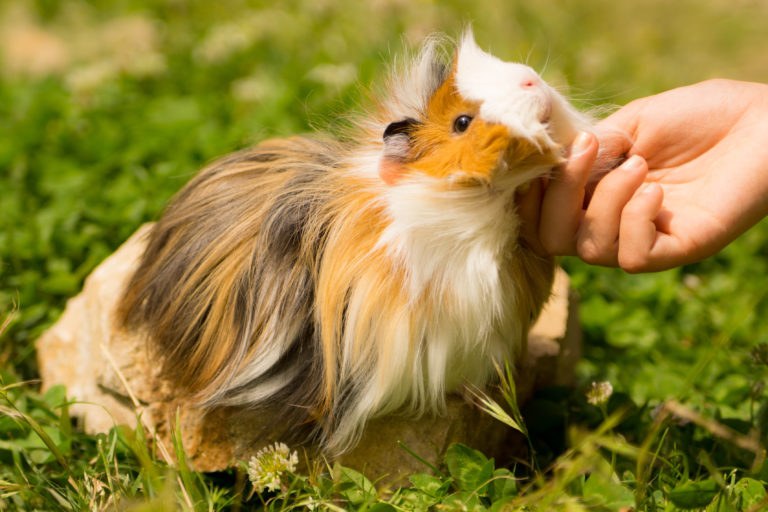Table of contents
How to Properly Groom your Guinea Pig
A healthy guinea pig will take care of its health and beauty regimen itself by and large. It will use its claws to remove dirt and dust from its fur and use its tongue to lick itself clean.

© Magalice / stock.adobe.com
A healthy guinea pig will take care of its health and beauty regimen itself by and large. It will use its claws to remove dirt and dust from its fur and use its tongue to lick itself clean.
Going over your guinea pig’s fur with a brush with natural bristles is one way of helping your guinea pig with fur care. This removes dead hairs and helps clean it, while giving your pet a lovely massage.
Regularly treating your guinea pig to a nice brush will also give you the chance to spot any parasites or skin problems early. While you’re guinea pig is shedding, i.e. mainly in Spring and Autumn, your guinea pig will particularly enjoy having this time together with you every day.
Long-haired breeds like Angora guinea pigs need some extra care. You need to provide regular fur care for these animals, since long-haired breeds don’t moult with the seasons like short-haired breeds. Instead, their fur just keeps on growing and can reach up to 20cm long.
If you don’t keep up with fur care, your pet will soon be tripping over its long, matted fur. And once it reaches this length, it will restrict your guinea pig’s movements to the point where it cannot even scratch itself any more. This will lead to excrement and bits of food being trapped in its coat, making life rather unpleasant for your poor little soldier.
Brushing: Daily brushing is essential for these animals. Here’s how:
Cutting fur: To keep caring for your pet’s fur care manageable and to maintain hygiene, it’s important to also regularly cut your guinea pig’s fur. Here’s how:
If your guinea pig isn’t wearing down its claws, perhaps because it doesn’t walk over rough stones enough, its claws may start to grow too long. This might put your guinea pig off of running around, as it won’t be able to put its feet down fully.
To prevent the claws from warping and getting infected, you should have a vet or pet shop worker clip its claws regularly with special purpose-designed clippers. If you would prefer to do it yourself, make sure to get proper training first.
If your guinea pig is a little lazy and doesn’t spend enough time chewing, its constantly growing teeth may become too long. Also, if your guinea pig was born with teeth that don’t line up properly, this may also lead to an overly long tooth. To keep your guinea pig happy and able to continue eating, its teeth will need to be cut 2 to 3 times a month by a vet.
Keep your guinea pig happy and healthy by following these steps, and you will enjoy each other’s company for several years to come.